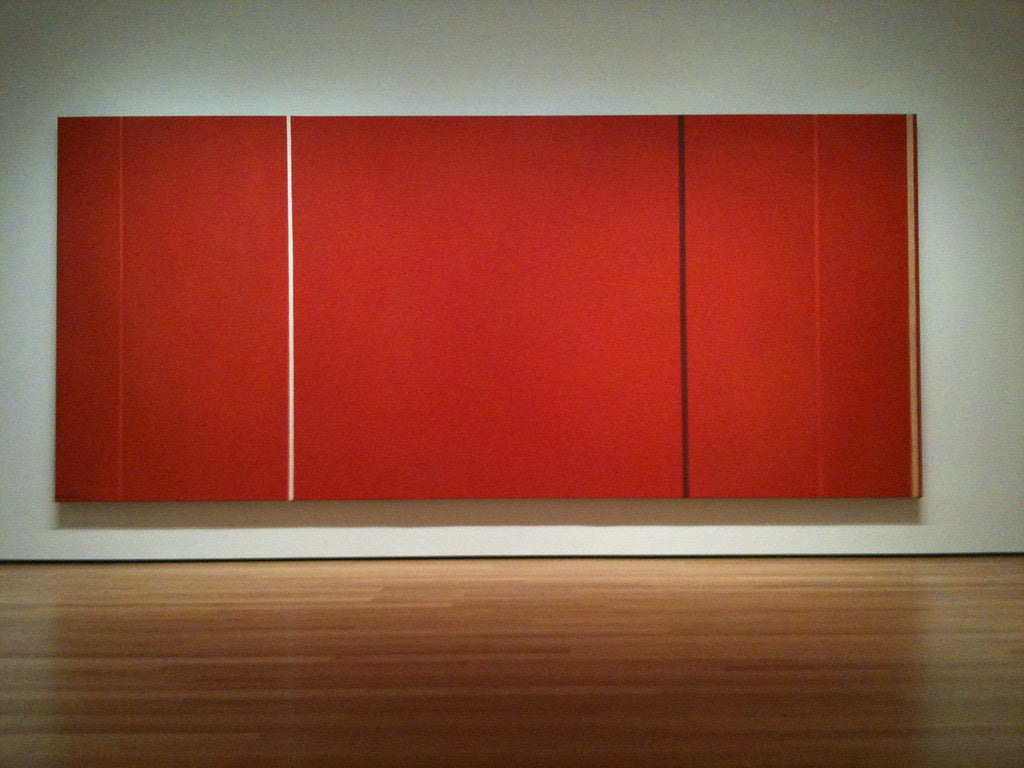
Barnett Newman – Vir Heroicus Sublimis (1950–51): Monumental Abstract Painting of the Color Field Movement
Barnett Newman’s Vir Heroicus Sublimis (Latin for “Man, Heroic and Sublime”) is one of the defining works of the Color Field movement and a landmark of postwar abstract art. Measuring over 8 feet in height and nearly 18 feet in width, the painting envelops viewers in an overwhelming expanse of luminous red. This intense color field is interrupted by several narrow vertical stripes—what Newman called “zips”—that punctuate the canvas and create a sense of rhythm and spatial division.
Newman’s goal was to create an immersive, almost spiritual encounter between the viewer and the artwork. He wanted people to stand close to the painting, so it filled their field of vision, allowing them to experience the red field not as a flat surface but as an environment. The “zips” function like visual markers, guiding the eye and suggesting both separation and connection within the vast color space.
Painted during a period when Abstract Expressionism was dominant, Vir Heroicus Sublimis broke away from the gestural chaos of action painting. Instead, Newman sought purity and transcendence through simplicity, scale, and color. His work was not about decoration but about creating an existential experience—a dialogue between human presence and infinite space.
Today, Vir Heroicus Sublimis remains a touchstone in modern art, influencing generations of minimalist and conceptual artists. It is a reminder that abstraction can be both monumental and deeply personal, using color as a direct pathway to the emotions and the sublime.
Join our latest collection
